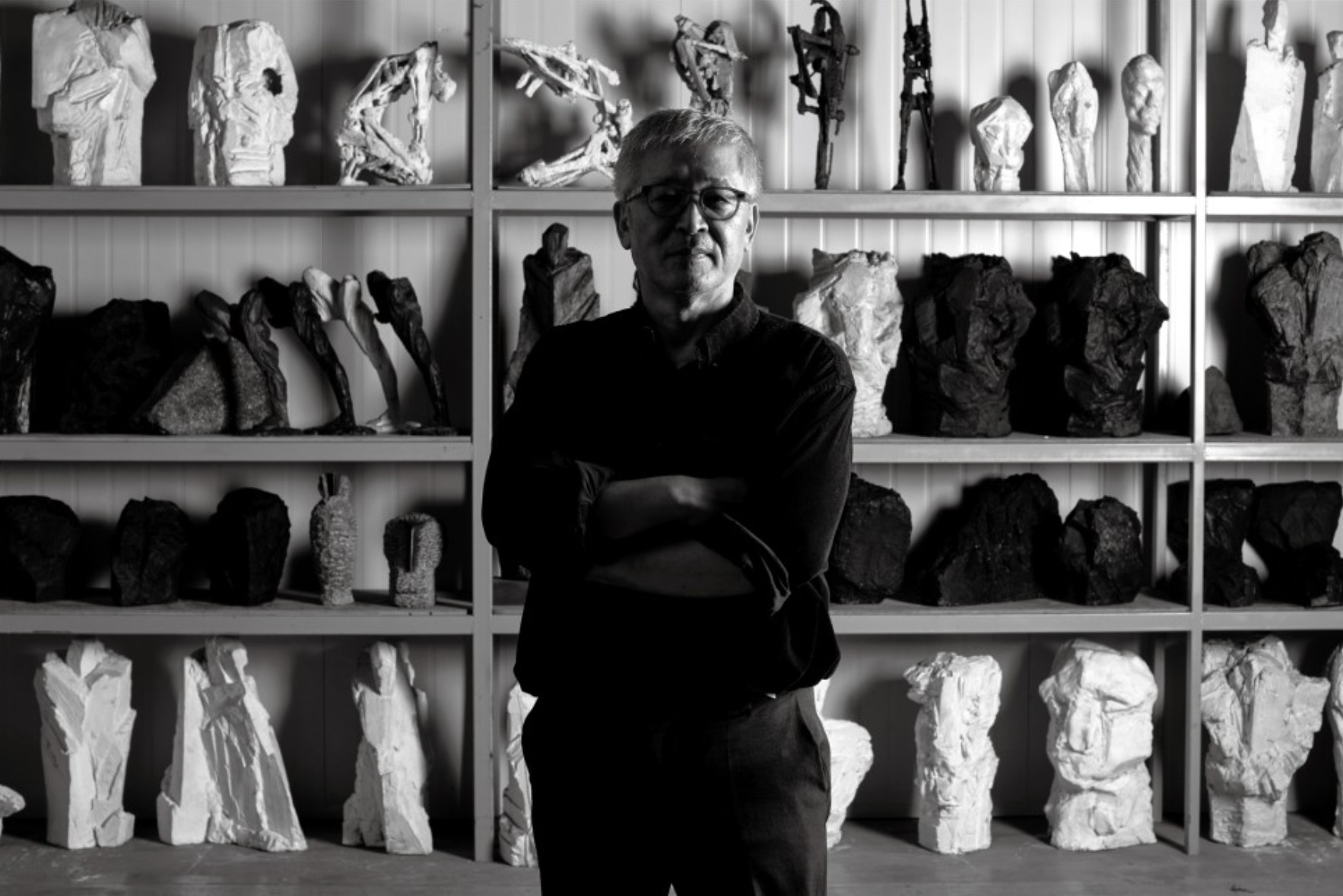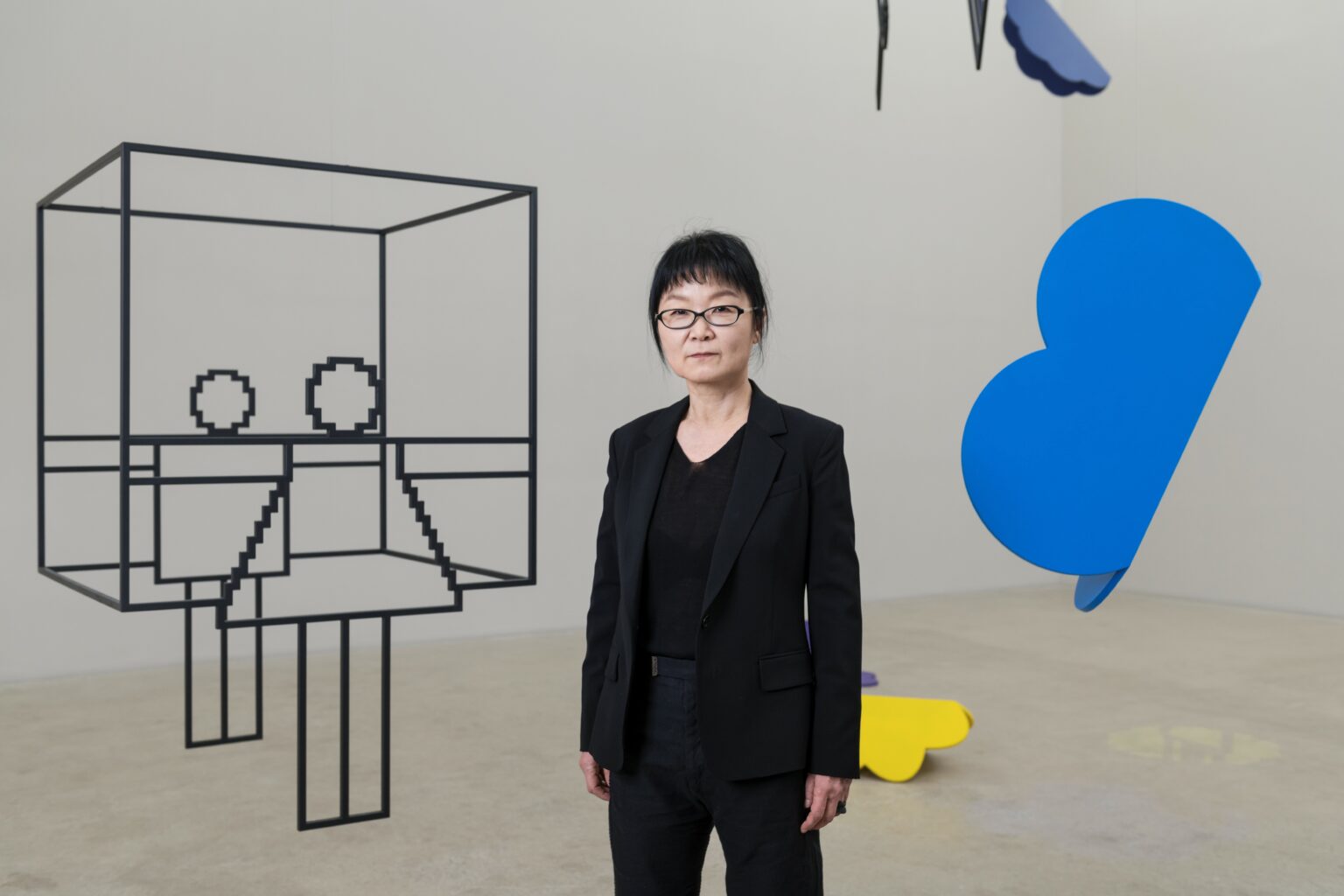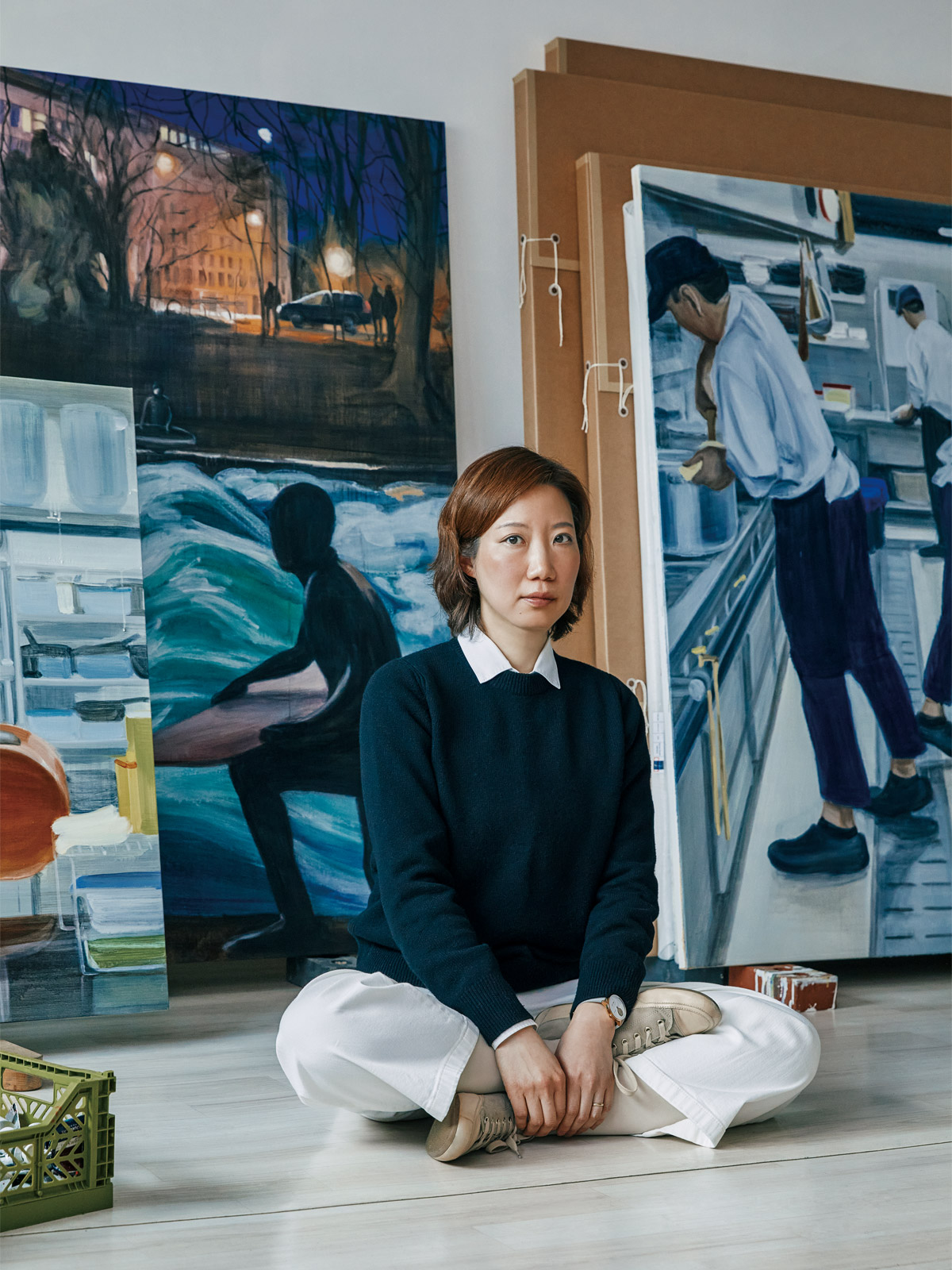Chung Hyun (b. 1956) has established a
unique art world in the history of contemporary Korean sculpture by sculpting anti-figurative,
existential human figures or fragmenting materials that are not commonly used
in the category of sculpture to reveal their materiality.
Since the 1980s, after studying abroad
in France, the artist has been striving to capture "human spirituality and
existential energy" by creating "psychological sculptures" in
which the artist's own emotions are interwoven with the sculptures, rather than
creating realistically "well-made" sculptures.
From the 1980s to the 1990s, he
created existential human figures as part of his work to strip away the habits
that had become habitual. Furthermore, the artist rejected conventional
academic methodologies and sought out materials and tools that were in harmony
with his sensibilities.
Since the 2000s, he has been using
non-traditional materials, mainly industrial byproducts such as iron scraps, old
wooden railway sleepers, tar, and a lump of steel used to break a piece of iron,
to emphasize the accumulation of time, beauty, and vitality of the materials
themselves.

Chung Hyun, Untitled, 1989 ©Chung Hyun
Chung graduated from Hongik
University with a BFA and MFA in sculpture in 1986 and went to study in Paris,
France. Studying in France was the beginning of the artist's unraveling of the
realism of sculpture that he had acquired while studying sculpture in Korea.
With the goal of capturing inner
expressions, such as his emotions, in his sculptures, rather than realistically
well-crafted sculptures, he has repeatedly stripped away all the academic
things he had learned and habituated to, as if in training. To do this, he
abandoned the traditional sculpting tool, the carving knife, and used a wood or
shovel to pound or chop the clay into shapes, using tools that resonated with
his sensibilities.
From the 1980s to the 1990s, Chung
began his ‘line carving’ work, in which he strips away the flesh of the
material layer by layer, as if peeling away conventional habits, until only the
bones remain. This anti-figurative process, which omits the specific shape of
the human body, leaving only the skeleton and muscles, is not about making
something precise, but about getting close to its essence and expressing the
energy of existence.
As a result, the results are
always inconsistent and irregular. Chung's sculptures often appear unfinished
rather than finished, which connects to the artist's inner life. The artist's
own thoughts can never be completely organized and are always in a state of
conflict and confusion, so the more unfinished they are, the more they come
into contact with the artist's inner self, giving them a sense of vibrancy and
life.
 Chung Hyun, The
Standing Man, 2001-2021 ©Gyeonggi Museum of Modern Art
Chung Hyun, The
Standing Man, 2001-2021 ©Gyeonggi Museum of Modern ArtGrowing up in the post-war 1960s, the
artist spent his childhood passing on railroad tracks traveled by freight
trains carrying military supplies. This experience played an important role in
his later use of 'old wooden railway sleepers' as objects, first discovering
them when he was in his 30s. The wooden railway sleeper is a tree that supports
the rails at the very bottom of a railroad track, bearing the immense weight of
the train, and the surface of a sleeper that has seen suffering days is full of
irregular scratches and scars that bear witness to the years of such labor. The
artist saw the history of the trials endured by these sleepers as an art form
in itself, overlapping with the harsh modern history of Korea.
Chung Hyun uses an axe to chip away at
the hard surface of the sleepers, but then switches to a method that respects
and reveals their texture. Using the sleepers as unprocessed as possible, he
created a standing human form with a simple structure. Later, he added
stainless steel or aluminum to the center of the human figure to emphasize the
human spirit's ability to overcome trials.

Chung Hyun, Untitled, 2014 ©Hakgojae Gallery
Like
railroad sleepers, another material that bears the marks of years of hard labor
is a lump of steel ball.
The steel ball is a large chunk of iron that serves to break the byproduct of
the iron-making process into smaller pieces.
After
years of crushing, its body becomes worn and scratched here and there. The
surface of the ball's body is left as a marker of the trials it has endured.
The artist takes a steel ball that has reached the end of its life and places
it outdoors, observing the surface as it naturally changes with the weather and
waxing it when it rusts.
Chung
also finds waste materials that are not traditional sculpture materials, such
as discarded rebars, wooden telephone poles, and pieces of wood burned in
forest fires, that bear the marks of trials, and draws attention to the unique
beauty of their history, while reflecting on all the ordinary lives that have
silently supported society.
 Chung Hyun, Untitled,
2014 ©SeMA
Chung Hyun, Untitled,
2014 ©SeMAIn addition to his
three-dimensional works, Chung has also expressed his thematic awareness
through drawing. For him, drawing is not an esquisse (etude) for sculpture,
but, like sculpture, it is a medium to express the artist's inner feelings at
the time. "Drawing is akin to tossing an emotion out there―an emotion that
has condensed somewhere within my body," he says. Just as he emphasizes
the inherent materiality and history of materials in his sculptures, his
drawings convey the presence of the material rather than the form of the image.
Chung's drawings reveal the
properties of the materials themselves rather than the artist's intervention,
such as collecting discarded X-ray film and painting on it with coal tar
(petroleum residue), or intentionally scratching white iron sheets and leaving
them outside on a rainy day to allow the rust to run off naturally, creating
traces.

Installation view of “Mass” ©SeMA
In his solo exhibition "Mass"
at the SeMA Nam-Seoul Museum of Art, which concluded in March this year, Chung
Hyun presented a new work, Stones That Occupy, which began with the
collision of materials. Chung was invited to an artist’s residency in Jangdo,
Yeosu, where he spent about three months, clearing his mind through walking and
focusing on the sensations of his body rather than planning his work.
Stones That Occupy began as
a result of collecting stones that he stepped on while walking and bringing
them to his studio one by one. The stones gathered by Chung are distinguished
by their textures, varying depending on their location on the island. Some bear
the harsh weathering of waves, while others retain their original rough
texture. The artist transformed all of these stones by magnifying or shrinking
them through 3D scanning technology, highlighting the traces of time and the
unexpected collisions of diverse textures with the new technology.
More than 30 years later, Chung
continues to work as a steady observer of the "uncommonness of trivial
things". In the waste that has already been used up, the artist finds
ordinary lives that have silently supported society through the social and
temporal hardships of industrialization and urbanization. By illuminating and
presenting the years of trials and vitality that these lives have undergone in
the artist's own way, Chung Hyun makes us look at them as an existential
reflection of everyone who lives faithfully with the time that is consumed.
"I am a person who works with my intestines and guts. Some people work with their head, some with their heart, some with their hands, but I feel like my work comes out of me when what I absorb is ripened and digested inside."
 Artist Chung Hyun
©Seongbuk Museum of Art
Artist Chung Hyun
©Seongbuk Museum of ArtChung Hyun graduated from Hongik
University with a BFA and MFA in sculpture and furthered his studies at the
Ecole Nationale Superieure des Beaux-Arts in Paris in 1986. Since his first solo exhibition at Galerie Won in 1992,
he has held more than 20 solo exhibitions in Paris, New York, and Tokyo,
including leading Korean institutions such as the SeMA Nam-Seoul Museum of Art
(2023-2024), Seongbuk Museum of Art (2022), and Kumho Museum of Art (2018).
He was selected as the ‘Artist of
the Year 2006’ at the National Museum of Modern and Contemporary Art Korea, the
‘1st AICA Korea Award’ at the Association Internationale des Critiques d’Art
Korea in 2009, and the ‘Artist Today 2004’ at the Kim Chong Yung Museum, and as
the representative artist of Korea to commemorate the 130th anniversary of the
establishment of diplomatic relations between Korea and France, he exhibited at
the Jardin du Palais-Royal and Domaine national de Saint-Cloud in Paris,
France. His works are in the collections of major museums and galleries in
Korea and abroad, including the MMCA and the Gyeonggi Museum of Modern Art.
References
- 정현, Chung Hyun (Artist Website)
- 서울시립 남서울미술관, 덩어리 (SeMA Nam-Seoul Museum of Art, Mass) :
- 경기도미술관, DMZ아트프로젝트 – 다시, 평화 (Gyeonggi Museum of Modern Art, DMZ Art Project - Peace, Again) :
- 성북구립미술관, 시간의 초상: 정현 (Seongbuk Museum of Art, The Portrait of Time: CHUNG HYUN) :
- 학고재 갤러리, 정현 (Hakgojae Gallery, Chung Hyun) :




















